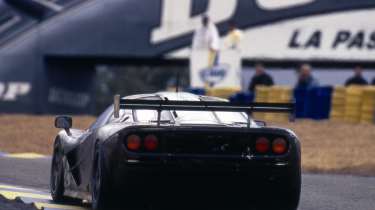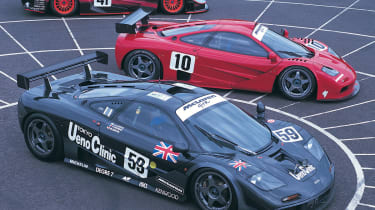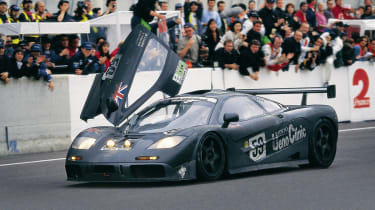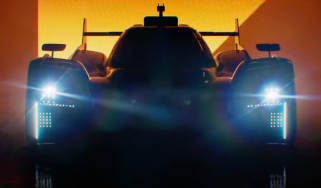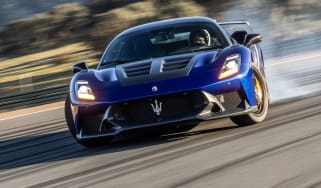McLaren F1 at the Le Mans 24 hours - McLaren F1 at the Le Mans 24 hours - page 2
In 1995, the McLaren F1 went racing, culminating in an assault on Le Mans. Here's the story
‘To make matters more stressful we had also identified a potential gearbox problem. Our other drivers – Yannick Dalmas and Masanori Sekiya – had both said they felt there was an issue between third and fourth gears, both on the up and downshift. JJ said he hadn’t noticed, but that was JJ… Anyway, I went to the gearbox man and said I wanted the back taken off the ’box so we could take a look, but he’d built the ’box himself and stubbornly refused to consider it had a problem.
'As you can imagine, things got a bit heated, and after much shouting at each other he eventually relented. When he came back some hours later to say that the selector fork was bent and the synchro was shot he was somewhat contrite. It wouldn’t have lasted another hour. Funnily enough, after that flare-up we’ve been best mates ever since!’
The race started dry and the WM Peugeots streaked off into the distance, closely followed by the other prototypes. Then the rain came and the race changed completely. It was said at the time that it was the weather that saved the McLarens, for a dry race would have put too much strain on the F1’s transmission. Humphrys again: ‘Yes, the rain meant the cars weren’t worked as hard as they would have been in a hot, dry race, but JJ was awesome during that long, treacherous night. At times he was 30sec a lap quicker than anyone else…’
I can vouch for Humphrys’ eulogy to Lehto, for despite the miserable weather John Barker, Roger Green and I stood transfixed on the inside of Tetre Rouge for lap after spellbinding lap, stunned by the Finn’s commitment and car control. Where others would tiptoe through, right foot audibly hovering on the throttle pedal, JJ would spear into view then dance the F1 through the fast right-hander, hard on the power, revs rising as that mighty, rasping BMW V12 span the rear wheels, then the note hardening as JJ’s quick, adrenalin-fuelled wits applied just enough corrective lock to balance but not wholly correct the slide. It was by any yardstick one of motor racing’s greatest drives.
Humphrys takes up the story once more: ‘Those stints are what built the victory for us, but again things could so easily have gone wrong. We knew that other teams were experiencing gear selection problems. You could hear their tentative shifts and occasional missed gears as they passed the pits. When our drivers also reported the problem we knew it was something common to all the F1s, but what could we do?
'At the next stop we checked everything, but couldn’t see an obvious problem. Then I remembered the linkage mechanism was exposed in the transverse ’box’s casing. Although they were partially shielded by a panel and a liberal coating of silicone grease, the rain and grit was being blasted at the linkages, forming a very effective grinding paste and gumming the whole thing up.
'I can remember thinking ‘we’ve got to do something about this’, and decided to pump as much WD40 as possible into the area where the rainwater and grit was collecting. We did it every stop from then on. Not only did we not encounter any more selection issues, but the gearbox was sweeter at the end of the race than it was at the beginning!'
The rest, as they say, is history. Not only did the Ueno Clinic car’s win (by a solitary lap from the Courage prototype racer of Bob Wollek, Eric Hélary and Mario Andretti) mean McLaren had conquered Le Mans at the first attempt, but it was also the first win for a Japanese or Finnish driver. To ram home the fact that car 59’s triumph was no fluke, F1 GTRs also occupied 3rd, 4th, 5th and 13th positions. The legend of the F1 – and the magical qualities of WD40 – was now complete.
>Watch - McLaren P1 GTR on track
